Creativity: My Superpower
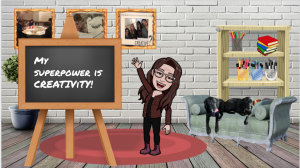
Introduction
How are you creative?
This book is meant to guide teachers in the process of gaining their own superpower and ways to grow superpowers in the students they work with so everyone can call creativity their superpower.
Creativity: My Superpower is a book like no other. This book will help the educator become competent and confident to teach in ways that promote creative thinking in the 21st Century classroom – both inside and outside.
It is critical right now to begin practicing these 21st-century pedagogies as we are nearly a quarter of the way through this century and in some ways schools do not look much different from schools of the last century. We continue to ask the question “Did my students learn at grade-level this year?” We still study and teach the same content in schools – 3 Rs (Reading, ‘wRitin’, and ‘Rithmatic’) and the same teaching pedagogies (direct instruction and testing), and the same materials (textbooks, pencils, and paper) that we did 30-50 years ago. Schools still focus on specific content for each grade level, testing in 3rd and 8th grade, and limited time blocks that are filled up with prepackaged curriculum guides and materials. For the most part, these reading, writing and mathematics materials are not unique to individual students and their strengths, they are not integrated with other contents or the arts, they are not inquiry-based, and they are not authentic or based on student and community assets. Educators know that students learn best when they are actively involved in environments that meet their individual needs and strengths; based on interesting and engaging topics that are meaningful; and, integrated together so the content has something to “stick to”. Also, in today’s world, we have access to many new tools and technologies that can change and have a positive impact on children and the ways we teach. Yet, we still try to teach to the test and use a skills-based curriculum to prove students are learning – or not learning. When we reframe the question to “What do we want our student to be able to do when they graduate their schooling experience rather than at the end of each school year (such as 3rd grade where we know we have a wide range of ages and abilities)?”, we then start to think more holistically about needs for students and the citizens in the 21st and 22nd centuries.
Schools, families, and students have access to many new technologies today, and these change on a day-to-day basis. We are in a time of change that is like no other with communication systems (phones, emails, and other messaging systems), computers and other devices, and other technologies that improve and are out of date on a weekly/monthly basis. Yet schools stay the same. If we want our students to be successful citizens of tomorrow, then schools need to change how we are teaching and rethink how we promote the learning and innovation skills or the 4 Cs – Creativity, Critical thinking, Collaboration, and Communication. We already have an abundance of research in how students learn as well as other innovative curriculum practices. This book will demonstrate ways to encourage the 4Cs so the outcome of Creative thinking is highlighted and can become a superpower for success today and tomorrow.
Using This Book
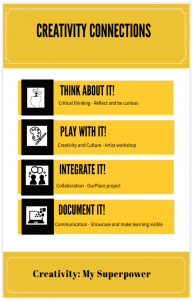 Each chapter has four main sections that include: Think about it!, Create it! Integrate it! And Document it! These four parts then align to the 21st Century 4Cs (Critical Thinking, Creativity, Collaboration, and Communication) of learning and innovation skills according to the P21 Framework http://www.p21.org/our-work/p21-framework. These sections will guide the reader through each topic from an overview of the topic and thinking section to full integration of the topic. Going through each of these parts will be enlightening for the reader and as well as engaging – and fun so the [new] teacher will be ready to integrate these ideas into their own classrooms and to feel confident in various ways to do it.
Each chapter has four main sections that include: Think about it!, Create it! Integrate it! And Document it! These four parts then align to the 21st Century 4Cs (Critical Thinking, Creativity, Collaboration, and Communication) of learning and innovation skills according to the P21 Framework http://www.p21.org/our-work/p21-framework. These sections will guide the reader through each topic from an overview of the topic and thinking section to full integration of the topic. Going through each of these parts will be enlightening for the reader and as well as engaging – and fun so the [new] teacher will be ready to integrate these ideas into their own classrooms and to feel confident in various ways to do it.
Superpower Stories
Each chapter will begin with a Superpower classroom story. A classroom event or experience will be highlighted and will be a conversation starter to see and hear how superpowers can be cultivated. After the story, there will be several reflection questions to think deeper about the situation that was described.
Think about it!
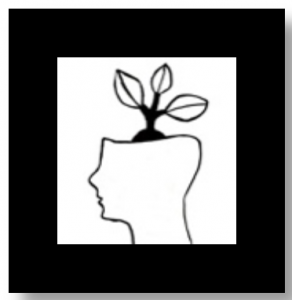 The beginning section, Think about it!, will frame each topic and set the context for exploring it deeper. It will also address the “Critical thinking” aspect of the 4Cs. This portion will include a theoretical overview of the topic and then thinking questions for both individual reflection and small group conversations with others. Readers and participants will have opportunity to reflect and think about how the content has had an impact on their own learning as well as how they can influence future students.
The beginning section, Think about it!, will frame each topic and set the context for exploring it deeper. It will also address the “Critical thinking” aspect of the 4Cs. This portion will include a theoretical overview of the topic and then thinking questions for both individual reflection and small group conversations with others. Readers and participants will have opportunity to reflect and think about how the content has had an impact on their own learning as well as how they can influence future students.
The Think about it! section should be facilitated in a large group by a leader, one who asks as many questions as they deliver content. The leader will need to connect the content to participants in ways that are interesting and relevant. This leader will essentially set the context for learning and this needs to be done in a fun, engaging, and creative way to model and support creativity. Participants should have the opportunity to reflect and think about the content and how this has impacted their own learning and how they can influence future students in their classrooms. This will be highlighted with a discussion about critical thinking and how it is or can be encouraged in the classroom.
Play with it!
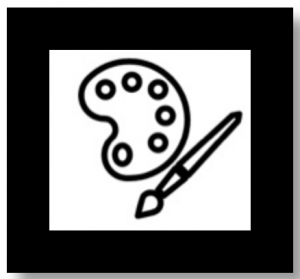 The second part of the chapter will be the Play with It! section. This will include a making workshop activity that will provide the adult learner time to explore how creative activities may have an impact on oneself. The participants will build trust with each other in this time and learn how to play and even “mess-up” with the materials. This is an important step for the adult learner to try the experience because if they are not comfortable with the materials, they will not be able to facilitate the experience as well with children. The Play with It! addresses collaboration (and cultural impacts) from the 4Cs.
The second part of the chapter will be the Play with It! section. This will include a making workshop activity that will provide the adult learner time to explore how creative activities may have an impact on oneself. The participants will build trust with each other in this time and learn how to play and even “mess-up” with the materials. This is an important step for the adult learner to try the experience because if they are not comfortable with the materials, they will not be able to facilitate the experience as well with children. The Play with It! addresses collaboration (and cultural impacts) from the 4Cs.
The Play with it! making workshops are meant to be implemented in small groups of four to five adult learners.. Having a small consistent group will help the adult talk about the material, play with the material, get messy and become proficient at using them.
The Play with it! section will be a workshop format with a Making Challenge to start the experience. Supplies lists, process, and facilitation, integrated curricular areas, and extensions will all be included. In the end, there will be a closing area to think about how creativity and cultural relevance embedded in this experience.
Integrate it!
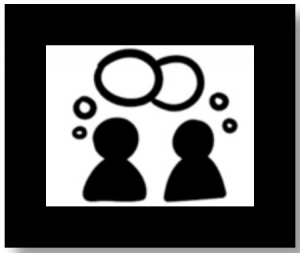 The third part of the chapter is the Integrate it! section. In this section, readers will see how an ongoing project for the classroom can integrate all of the creative workshop experiences in a developmentally appropriate way for children and students. This community project will guide the adult learner through the process of creating an in-depth, ongoing, collaborative project in a working group. This part highlights collaboration from 4C’s and should be experienced by the adult learner.
The third part of the chapter is the Integrate it! section. In this section, readers will see how an ongoing project for the classroom can integrate all of the creative workshop experiences in a developmentally appropriate way for children and students. This community project will guide the adult learner through the process of creating an in-depth, ongoing, collaborative project in a working group. This part highlights collaboration from 4C’s and should be experienced by the adult learner.
These same small groups from the Play with it! section, should work together in their Integrate it! OurPlace community project to help build a stronger relationship in the group and it will be a model for when the adult learner facilitates it with children. Having the small groups remain the same throughout the experiences will support a cohesive group, one that has trust and respect among the members. The OurPlace Project helps to connect students to their environment and local context through a Place-Based Arts-Rich Curriculum where children, families, and teachers work together to identify a place and build community together. This project will integrate the various forms of arts and making that are in each chapter so at the end of the book, the adult learners will have participated and created a fully integrated unit that is ongoing, art-rich, and culturally responsive. The OurPlace project should be in a nearby outdoor location, one that has some elements of nature such as a tree, bush, flowers, rocks even weeds – more on this in each chapter.
The Integrate it! portion of the chapter will highlight and take adult learners through the process of collaboration and community-engaged experiences. Thoughts about this practice will end each Integrate it! section.
Document it!
 The fourth section in each chapter, Document it!, will help the adult learner “learn-about” and “how-to” make learning visible and ways to showcase this learning so the broader community understand the values of these experiences. In addition, this showcase provides evidence that learning exists, standards are met, technology is used, and students are 21st-century learners.
The fourth section in each chapter, Document it!, will help the adult learner “learn-about” and “how-to” make learning visible and ways to showcase this learning so the broader community understand the values of these experiences. In addition, this showcase provides evidence that learning exists, standards are met, technology is used, and students are 21st-century learners.
The Document it! Section of each chapter can be done either individually or by the collective group. Ideally, the group would set up a private website such as a google site, or another web platform such as weebly.com, digication.com, wordpress.com, or another free site with privacy settings. As the website evolves, the teacher or class may want to expand the audience to others in the community such as parents or other school community members. The website tool is a way to showcase progress and snapshots of time. In addition, these snapshots provide documentation and make learning visible to both the learner and others that may visit the website. These learnings could be connected to standards, competencies, or other values driven by the school or learning community. In a sense, this method of communication empowers both the learner and others who view it to see and understand the superpower of creativity.
The Document it! section will highlight the value of communicating the learning – both the reflections about the activity and ways to show growth and mastery of the content.
Big Questions
There are many big questions that will be addressed in this book such as: Why is creative thinking for children important? Why is creativity necessary in the early childhood 21st-century classroom (and beyond)? What does creativity look like in the classroom? How can educators feel confident in their own creativity? How can educators promote experiences to support young learners to be creative thinkers? How do you create a holistic, authentic, culturally relevant place-based curriculum in your classroom? This book attempts to answer these questions and more – and will provide ways to enhance learning and innovation skills in the classroom. By reading this book, the reader will have the opportunity to think about the various issues, try new experiences and materials, talk about how to go deeper with these ideas in a connected way, and how to communicate and showcase the learning to make it visible. Together, we will grow our own superpowers of creativity and ways to promote it in our students.
